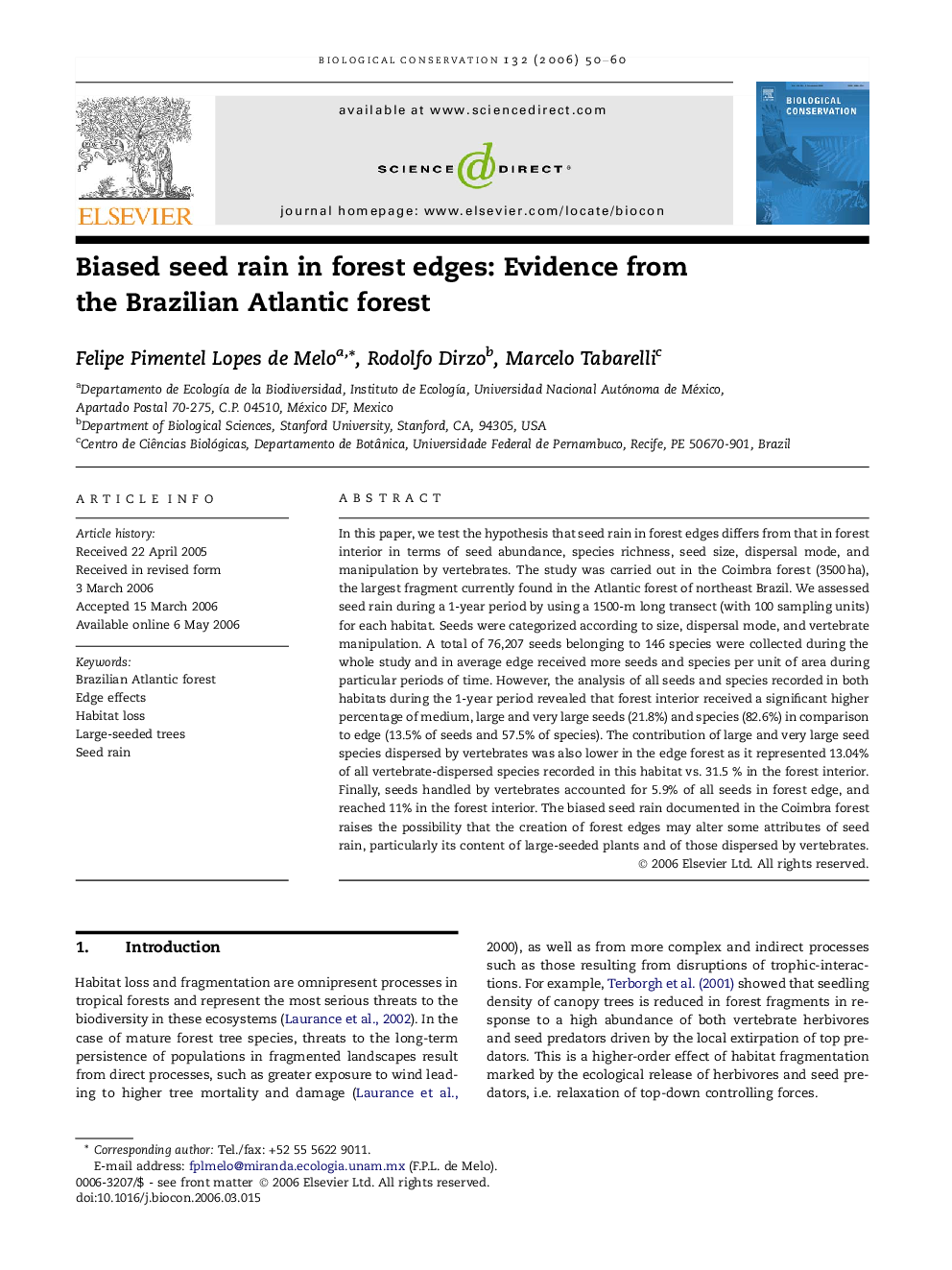| Article ID | Journal | Published Year | Pages | File Type |
|---|---|---|---|---|
| 4387650 | Biological Conservation | 2006 | 11 Pages |
In this paper, we test the hypothesis that seed rain in forest edges differs from that in forest interior in terms of seed abundance, species richness, seed size, dispersal mode, and manipulation by vertebrates. The study was carried out in the Coimbra forest (3500 ha), the largest fragment currently found in the Atlantic forest of northeast Brazil. We assessed seed rain during a 1-year period by using a 1500-m long transect (with 100 sampling units) for each habitat. Seeds were categorized according to size, dispersal mode, and vertebrate manipulation. A total of 76,207 seeds belonging to 146 species were collected during the whole study and in average edge received more seeds and species per unit of area during particular periods of time. However, the analysis of all seeds and species recorded in both habitats during the 1-year period revealed that forest interior received a significant higher percentage of medium, large and very large seeds (21.8%) and species (82.6%) in comparison to edge (13.5% of seeds and 57.5% of species). The contribution of large and very large seed species dispersed by vertebrates was also lower in the edge forest as it represented 13.04% of all vertebrate-dispersed species recorded in this habitat vs. 31.5 % in the forest interior. Finally, seeds handled by vertebrates accounted for 5.9% of all seeds in forest edge, and reached 11% in the forest interior. The biased seed rain documented in the Coimbra forest raises the possibility that the creation of forest edges may alter some attributes of seed rain, particularly its content of large-seeded plants and of those dispersed by vertebrates.
